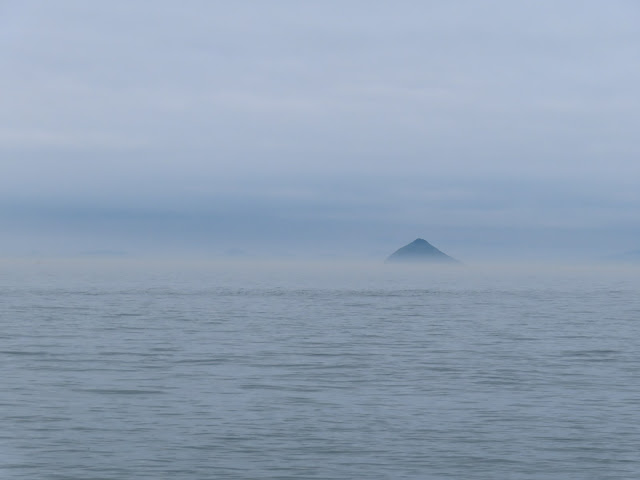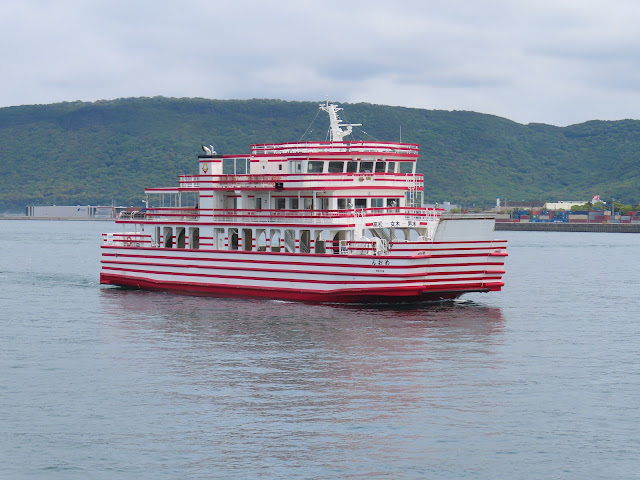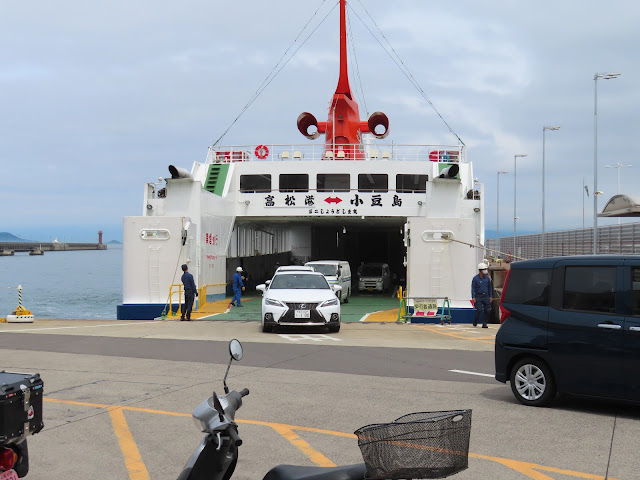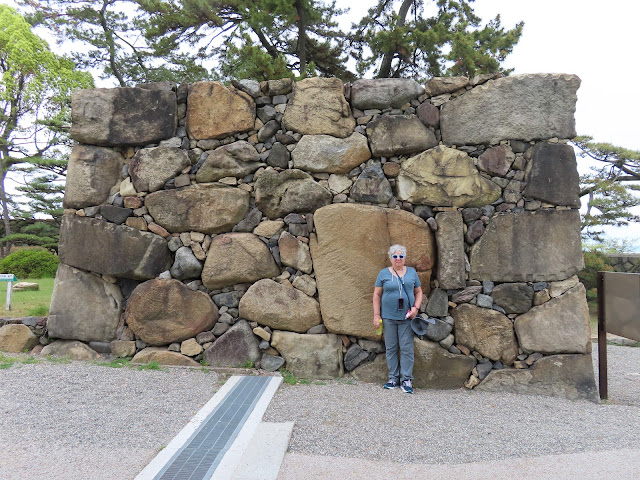Wednesday, April 24, 2024
This morning we said goodbye to Takamatsu, and I wasn’t sorry to leave. It wasn’t terrible, but it wasn’t that interesting. It wasn’t easy to get around. It wasn’t always easy to understand or be understood by local residents. It wasn’t easy to find a sit-down restaurant for dinner. With the exception of the outstanding Ritsurin Garden, I feel that Takamatsu is skippable. You could easily visit Ritsurin on a daytrip from Okayama. The train ride to Takamatsu takes only an hour. If you want to see Naoshima, using Okayama as a base for a day trip probably works better.
I had to go to Takamatsu to figure this out. Now, you don’t have to. Sometimes those out-of-the-way places are quite delightful, and sometimes they are just places that are off the main tourist track for a reason.
We took the Marine Liner, an express train, back to Okayama, and from there we took the Shinkansen on to Nagoya.
The Shinkansen is awesome. If you are standing next to the track with your back to the direction the train will come from, you will not know it has arrived until the leading car has entered your peripheral vision. It’s that quiet.Upon arriving in Nagoya, we proceeded to the Hilton, and it was such a delight to be in a hotel that is so well run by a staff that was so incredibly gracious and attentive.
The weather was on and off drizzle with a very low cloud ceiling.
 |
| The view from our room at the Hilton. The tall, unusual building on the left is the Spiral Building - very beautiful. Its design, based on half-square triangles, is very appealing to a quilter. |
We needed a little time to motivate ourselves to go out again on such a lackluster day, but we finally got ourselves out the door and we soon arrived at the Nagoya Castle and Hommaru Palace, where Ninja with umbrellas tried to prevent us from entering.
 |
| The approach to the Castle was lined with (closed) booths selling snacks such as sponge cake balls on skewers. |
 |
| I love this! |
 |
| This is the Front Second Gate, one of the few remaining original structures of the Castle. It is an Important Cultural Property. |
 |
| The entrance to the Palace |
Taimenjo, the Reception Hall, was used by the Lords for private meetings and banquets. These four rooms are decorated with depictions of the customs of the era and famous sights.
We have more photos, but you get the idea.
We tried a local specialty for dinner: miso katsu. It is simply a breaded, fried cutlet (katsu - the same as everywhere else), with a thick, intense miso-based sauce instead of the usual fruity, vinegary tonkatsu sauce.
Today’s fabric is the tatami border (tatami-heri). This is the border on the tatami mat - a straw mat used as flooring in a traditional Japanese room. The heri seen in the Palace,would most likely have been made of hemp, which yields the best quality. All the tatami we saw inside the Palace had the same heri. It appears to be a stylized pattern, possibly suggesting the family crest of one of the lords. Below, the edges of two tatami in the Palace are butted together, so you are seeing two heri, or borders, so well-aligned that they almost appear to be a single strip of fabric.



























































